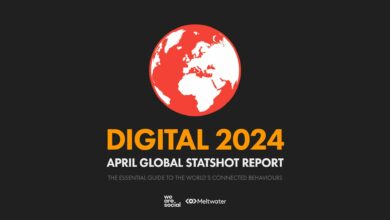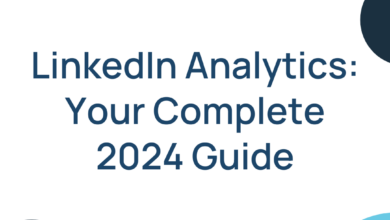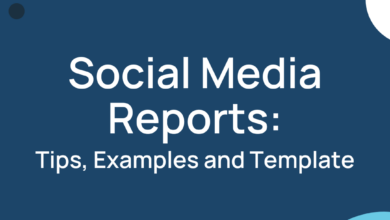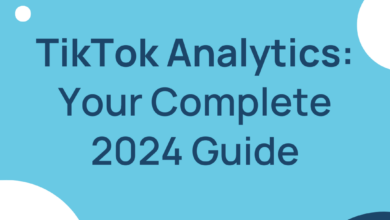How to Run a Fast and Effective Social Media Audit
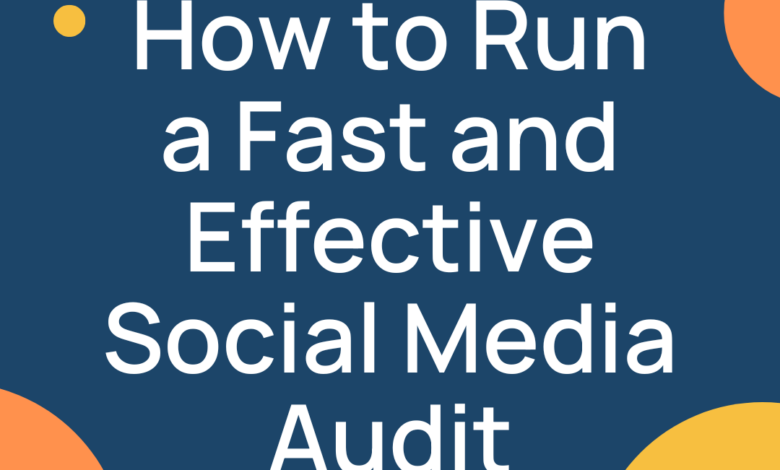
Imagine your social media strategy as a garden you’ve lovingly tended to over the years. Each platform is a different plot, where various types of content bloom like flowers, attracting visitors with their unique appeal.
But even the most vibrant gardens require regular care and an understanding of what truly thrives within them. Enter the social media audit: your essential tool for pruning away the underperforming elements and nurturing the aspects that promise the most growth.
This guide is your gardener’s almanac for the digital age, designed to help you assess, refine, and possibly redefine your online presence. From untangling the intricacies of what makes an audit crucial, to digging into the steps and benefits of conducting one, we’ll ensure your social media garden is not just surviving, but flourishing.
What is a social media audit?
A social media audit is a thorough review of your business’s social media accounts. Think of it as a health check for your social media presence. It involves taking a step back and looking at what you’ve been doing on platforms like Facebook, Twitter, Instagram, and LinkedIn. You’ll examine which strategies are working, which aren’t, and what can be improved.
During an audit, you collect and analyze detailed data from your social media accounts. This data includes follower counts, engagement rates (like shares, comments, and likes), and the performance of your posts and campaigns. The goal is to identify trends, understand your audience better, and see how your social media activities align with your business objectives.
By doing a social media audit, you can make informed decisions about how to adjust your strategy to better reach your goals. It helps you to focus on what’s important, ditch efforts that aren’t paying off, and optimize your approach to engage your audience more effectively.
This process is crucial for any business looking to maintain a competitive edge and ensure its social media efforts are as effective as possible. It’s not just about cleaning up your accounts, but about strategically planning your social media moves to support your overall business goals.
What are the benefits of a social media audit?
A social media audit is more than just a routine check-up for your digital marketing strategy; it’s a powerful tool that offers numerous benefits for your business. Here’s how an audit can positively impact your social media efforts:
Enhanced Understanding of Your Audience
One of the primary advantages of conducting a social media audit is gaining deep insights into who your followers are, what they like, and how they interact with your content. This knowledge allows you to tailor your content strategy to better suit their preferences, leading to higher engagement rates and a more engaged community.
Optimized Content Strategy
By reviewing which posts, videos, and campaigns perform best, you can identify content types and topics that resonate with your audience. This enables you to focus your resources on creating more of what works, improving the effectiveness of your content strategy and maximizing your return on investment.
Improved Brand Consistency
An audit helps ensure that your messaging and visual branding are consistent across all social media platforms. Consistency is key to building brand recognition and trust with your audience. By identifying discrepancies in your branding, you can take steps to present a unified brand identity that aligns with your business values and goals.
Better Allocation of Resources
By analyzing the performance of your social media activities, you can identify underperforming areas that may be draining your resources. Redirecting efforts from less effective platforms or strategies to those that offer higher returns can improve your overall marketing efficiency and effectiveness.
Increased Return on Investment (ROI)
Through the strategic insights gained from an audit, you can make informed decisions that enhance your social media strategy’s ROI. Understanding what works allows you to invest in high-performing initiatives, reduce waste, and achieve better results with your social media budget.
Competitive Advantage
Conducting a social media audit also offers the opportunity to benchmark your performance against competitors. By understanding your position in the market and identifying areas for improvement, you can develop strategies to differentiate your brand and gain a competitive edge.
Identification of New Opportunities
An audit can reveal new trends and opportunities within your industry or audience segments that you may not have previously considered. By staying ahead of these trends, you can adapt your strategy to capitalize on them, potentially opening up new avenues for engagement and growth.
Risk Management
Finally, a social media audit can help identify any potential risks or issues, such as outdated information, improper handling of customer data, or engagement in practices that could harm your brand reputation. Addressing these issues promptly can save your brand from potential crises and protect your company’s reputation.
The benefits of a social media audit extend far beyond simple account maintenance. They provide strategic insights that can lead to improved audience understanding, content optimization, brand consistency, resource allocation, ROI, competitive advantage, opportunity identification, and risk management. Conducting regular social media audits ensures that your social media strategy remains aligned with your business objectives and continues to drive value.
9 Steps for Conducting a Social Media Audit: Audience, Content, Performance and Competitors
Conducting a social media audit is a systematic process that involves several key steps. Below is a comprehensive guide to help you through each stage of the audit.
Get an automated brand, content and competitor audit of your social channels with a free trial of Locowise.
1. List All Your Social Media Accounts
Start by compiling a list of all your social media accounts, including those that may have been created but are no longer in active use. This includes platforms like Facebook, Instagram, Twitter, LinkedIn, YouTube, Pinterest, and any other networks where your brand has a presence. Verify each account to ensure it’s officially recognized and accurately represents your brand.
2. Analyze Account Details
For each account, check and record important details:
- The URL or handle
- The account name and description
- Profile and cover images
- The number of followers or subscribers
- The date of the last post
This step ensures that all your social media profiles are complete, consistent, and up-to-date, reflecting your current brand identity and messaging.
3. Gather Performance Data
Collect data on how each account is performing. Key metrics to focus on include:
- Engagement rates (likes, shares, comments)
- Post reach and impressions
- Growth in followers over time
- Click-through rates for posts with links
- Any notable trends in post performance
Use social media analytics tools, many of which are provided by the platforms themselves, to gather this data.
4. Evaluate Content Strategy
Review the types of content you’re posting on each platform, considering:
- The mix of social content types (images, videos, text posts, etc.)
- The frequency of posts
- Engagement levels for different types of content
- How well your content aligns with your brand messaging and goals
This evaluation will help identify what content resonates best with your audience and where there may be gaps in your content strategy.
5. Understand Your Audience
Use analytics tools to dive into demographics and behavior of your audience on each platform, including age, gender, location, and interests. Understanding your audience helps tailor your content and messaging to better meet their preferences and needs.
6. Audit Engagement
Look into how your team responds to comments, messages, and mentions on each platform. Timely and appropriate engagement can significantly enhance your brand’s reputation and customer loyalty.
7. Compare Against Competitors
Identify your main competitors on social media and compare your presence and performance to theirs across all the areas above. This comparison can offer insights into your competitive position and highlight opportunities for improvement or differentiation.
8. Set Goals and Plan for Improvement
Based on your audit findings, set clear, measurable goals for your social media strategy. This might involve increasing engagement rates, growing your follower base, or improving the consistency of your brand messaging across platforms.
9. Implement Changes and Monitor Progress
Begin implementing the necessary changes to your social media strategy based on your goals. This could include updating profile information, refining your content strategy, or reallocating resources to more effective platforms. Continuously monitor your progress toward these goals and adjust your strategy as needed.
Your Social Media Audit Checklist for Each Platform
During a social media audit, there are platform-specific elements you should pay attention to, as each social media channel has unique features and metrics that can influence your strategy. Here’s a breakdown by some of the major platforms:
- Page Insights: Review engagement metrics, page likes/followers growth, and the reach of your posts.
- Content Performance: Analyze which types of posts (videos, images, links) perform best.
- Audience Demographics: Understand the age, gender, and location of your audience.
- Response Rates: Check how quickly and effectively your page responds to messages and comments.
- Follower Engagement: Look at likes, comments, and shares, especially in relation to Instagram Stories and Reels.
- Hashtag Performance: Assess which hashtags have driven the most engagement or discovery.
- Instagram Insights: Use Instagram insights to review follower growth, top-performing content, and audience demographics.
- Story Insights: Stories have unique metrics like replies and exits that can provide insights into content performance.
- Tweet Engagement: Analyze retweets, likes, and replies to identify topics that resonate with your audience.
- Audience Insights: Explore demographics, interests, and follower growth.
- Hashtag and Mention Analysis: Examine the performance of tweets with specific hashtags or mentions.
- Profile Visits: Look at the number of profile visits as an indicator of interest in your brand.
- Page Analytics: Review follower growth, engagement rates, and post reach.
- Content Type Performance: Identify which types of posts (articles, videos, images) perform best with your professional audience.
- Employee Advocacy: Measure how effectively your employees are amplifying your content.
- Lead Generation Forms: For B2B companies, assess the effectiveness of LinkedIn lead gen forms attached to your posts.
YouTube
- Video Performance: Evaluate views, likes, comments, and shares of your videos.
- Watch Time: This metric is crucial for understanding how engaging your content is.
- Subscriber Growth: Track how your subscriber base is growing over time.
- Audience Demographics: Gain insights into the age, gender, and location of your viewers.
- Pin Engagement: Look at repins, likes, and comments to understand what content your audience finds most appealing.
- Link Clicks: Since Pinterest often serves as a referral source to websites, tracking link clicks is vital.
- Board Performance: Assess which boards are driving the most engagement and adjust your strategy accordingly.
TikTok
- Video Views and Engagement: Analyze views, likes, comments, and shares to gauge content popularity.
- Follower Growth: Track your TikTok performance based on how quickly your follower count is increasing.
- For You Page Appearances: Understanding how often your content appears on the For You Page can help gauge its reach and engagement.
How often should a social media audit be conducted?
The frequency of a social media audit can depend on the size of the business and the dynamic nature of its social media strategy. Generally, it’s recommended to conduct an audit at least once a year, but doing so quarterly can be beneficial for keeping strategies aligned with rapidly changing social media trends and business objectives.
Which metrics are important during a social media audit?
Key metrics to focus on include engagement rates (likes, comments, shares), follower growth, reach and impressions, click-through rates, and content performance. These metrics can help assess the health and effectiveness of your social media efforts.
Can I conduct a social media audit by myself?
Yes, it’s possible to conduct a social media audit by yourself, especially for smaller businesses or personal brands. Utilizing the analytics tools provided by social media platforms, along with a structured approach, can enable individuals to perform effective audits. For larger organizations, a team approach might be more efficient.
What should I do if I find inactive or underperforming accounts?
If an account is inactive or consistently underperforms, consider whether it aligns with your current business goals and audience. It might be beneficial to either revitalize it with a new strategy or deactivate it to focus resources on more effective platforms.
How do I ensure brand consistency across all platforms?
Review and update all profile elements, including bios, profile and cover images, and descriptions, to reflect your current brand identity and messaging. Consistent use of logos, colors, and voice across platforms helps in maintaining brand consistency.
What’s the next step after completing a social media audit?
After completing the audit, develop a clear action plan based on your findings. This might involve updating your social media strategy, refining content plans, enhancing engagement practices, or reallocating resources. Implement these changes and continuously monitor progress to ensure ongoing improvement.
How does a social media audit benefit my marketing strategy?
A social media audit provides critical insights into your brand’s social media performance, audience preferences, and competitive landscape. These insights allow for informed decisions that can enhance your overall marketing strategy, improve engagement, increase reach, and ultimately contribute to achieving your business goals.
Get Shareable, Beautifully Designed Social Audits at the Push of a Button
Dive deep into the insights that matter with Locowise’s Social Media Audit Tool. If you’re looking to not just see, but truly understand the impact of your social media efforts, our tool is designed for you. It’s about making informed decisions, backed by comprehensive data that speaks directly to your strategy’s strengths and opportunities for growth.
Why settle for a one-size-fits-all approach when you can have tailored insights that resonate with your unique brand? Take the first step towards smarter social media management. Sign up for a free trial of Locowise today and start making your data work for you.
The post How to Run a Fast and Effective Social Media Audit appeared first on Locowise Blog.
Source link

